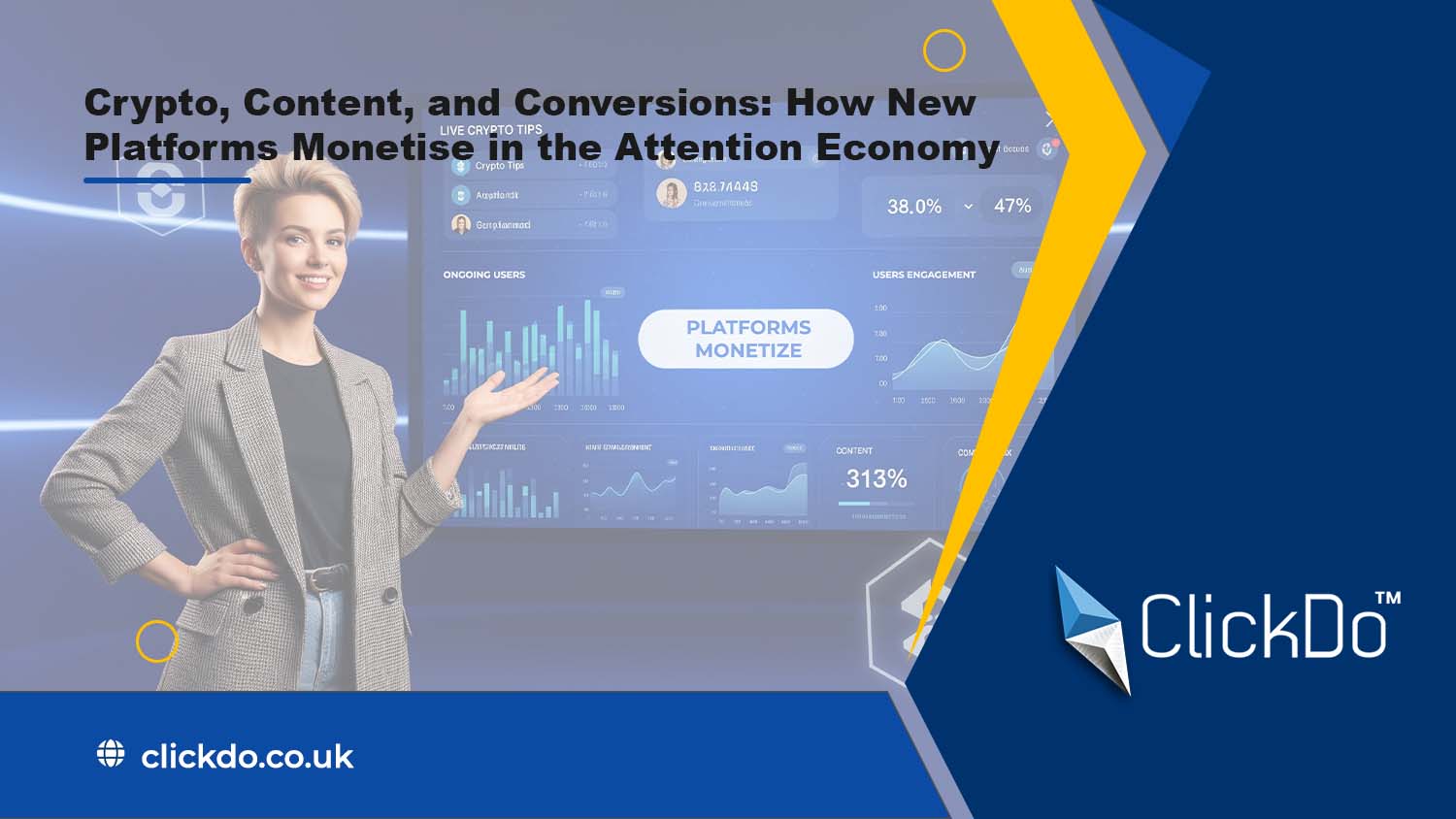
Crypto, Content, and Conversions: How New Platforms Monetise in the Attention Economy
Table of Contents
These days, attention is currency. The platforms that keep people watching, scrolling, and interacting are the ones that grow. But while Web2 built its model on ad clicks and data tracking, crypto-native platforms reward your attention directly instead of selling it to advertisers.
In the attention economy, companies turn views into cash by packing screens with sponsored posts, targeted banners, and endless feeds designed to hook users longer. This setup lets them charge brands for every view or interaction, while gathering personal info to sharpen those ads even more. Subscriptions sometimes play a part, too, where users pay for premium access to cut down on interruptions.
Crypto changes the game by putting value back in users’ hands through tokens, tips, and shared earnings from the platform itself. How do they monetise then? There are a few ways.
Monetisation 2.0: From Views to Value

Traditional online platforms rely on views, CPMs, and algorithmic reach. For creators, that often means chasing viral hits just to earn pennies. In crypto-native systems, the logic is similar, but no sponsors or ads are needed, as small interactions can lead to real earnings themselves.
Platforms like Mirror and DeSo use token-based tipping, on-chain royalties, and creator coins. When someone likes your post, shares it, or buys your content, you earn instantly. Transactions are fast, fees are low, and ownership is clear.
This opens the door for bloggers, streamers, and niche creators to monetise without big followings or brand deals. A handful of loyal fans can send small donations, stake behind your content, or buy limited drops — all without waiting weeks for payouts.
Retention through Engagement Loops
Keeping users around is harder than getting them in. Crypto-native platforms get this and design engagement loops that reward more than just time-on-site.
Here’s how many do it:
- Daily challenges or streak bonuses
- Staking rewards for activity or referrals
- Leaderboards with token payouts
- NFT unlocks tied to achievements or engagement
This is a value-driven retention. When a user earns something tangible — a token, a bonus, or even governance power — they’re far more likely to stay, return, and spread the word. For example, betting platforms combine this with loyalty ranks and smart contract-backed bonuses.
Tokenised Communities that work like Teams

Communities built around tokens are micro-economies. Every like, comment, and repost can be part of a value loop that benefits both the creator and the audience.
Platforms like Farcaster and Lens Protocol give users ownership. You don’t just follow someone, but can stake behind them, curate content, or participate in decision-making. The more you engage, the more you earn in real tokens and access. Influences, in turn, earn from your engagement.
This model is starting to replace the old “influencer + followers” setup. Instead of one-way attention, it’s a two-way value exchange. Everyone plays a part and gets a share.
Affiliate Revenue, reinvented
Affiliate models have been around forever, but crypto adds speed and transparency to it.
For example, at Sportbet.one website and other crypto betting platforms, you can access an on-chain affiliate system where users earn a share of the revenue from players they refer, tracked automatically, with no manual approval needed. Everything is logged on-chain, and earnings can be withdrawn at any time.
Smart contracts run this entire process, making it transparent because anyone can check the rules and records directly on the blockchain without relying on hidden company decisions.
This makes it easier for streamers, writers, or community managers to partner with platforms as they don’t need to negotiate rates or chase unpaid commissions. The system works because the incentives are baked into the code.
Conversions: Turning Attention into Action

The end goal of all this is, of course, conversion — turning attention into transactions. Basics of marketing and sales here work the same as everywhere else: your attention is worth something if it leads to a purchase. In the crypto world, that could mean:
- Joining a DAO
- Buying an NFT
- Placing a bet
- Subscribing to exclusive content
- Staking tokens to support a creator
Platforms that integrate wallet connections and smart contracts can do all of this without friction. Just scroll, click, and transact. And this is one of the biggest perks in the cryptoworld: you can buy and send donations without paying fees and long waiting.
Final Thoughts: Where it’s going
Crypto platforms are refining the internet: they cut out layers, add transparency, and reward the people who actually create and share content. In this new model, the viewer becomes a participant, the creator becomes a partner, and the platform becomes an ecosystem. That’s what makes it work and what makes it last.
And in the attention economy, lasting might be the only thing that matters.
Author Profile
- Online Media & PR Strategist
- Blogger and Educator by Passion | Contributor to many Business Blogs in the United Kingdom | Fascinated to Write Blogs in News & Education I have completed a journalism summer course at the London School of Journalism and manage various blogs.
Latest entries
 BusinessOctober 8, 2025How Industrial Shelving, Handling & Lifting Equipment Boost Warehouse Efficiency
BusinessOctober 8, 2025How Industrial Shelving, Handling & Lifting Equipment Boost Warehouse Efficiency BusinessSeptember 10, 20255 Customer Service Must-Do’s That Boost Customer Loyalty
BusinessSeptember 10, 20255 Customer Service Must-Do’s That Boost Customer Loyalty HRAugust 18, 2025From Developer Pools to Product Teams: The Quiet Shift in Software Outsourcing
HRAugust 18, 2025From Developer Pools to Product Teams: The Quiet Shift in Software Outsourcing BusinessAugust 12, 2025How Do Business Loans in Property Development Work in the UK?
BusinessAugust 12, 2025How Do Business Loans in Property Development Work in the UK?

